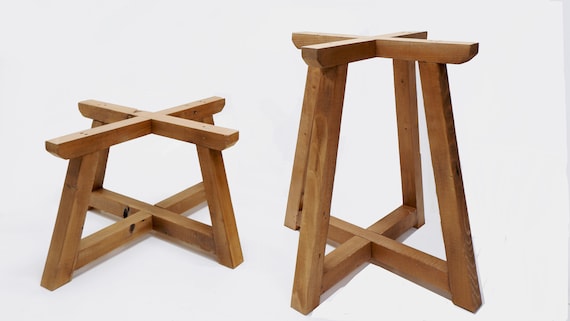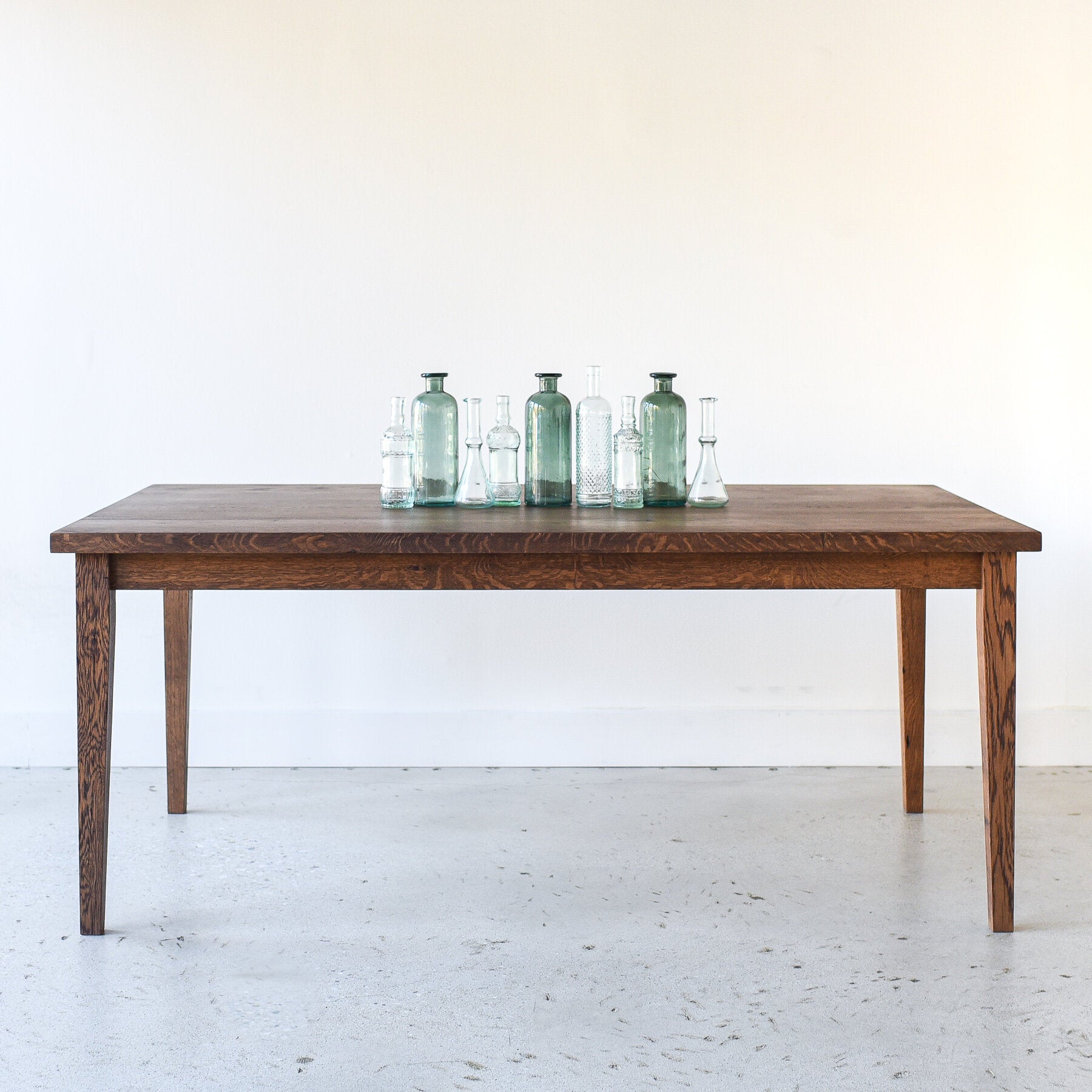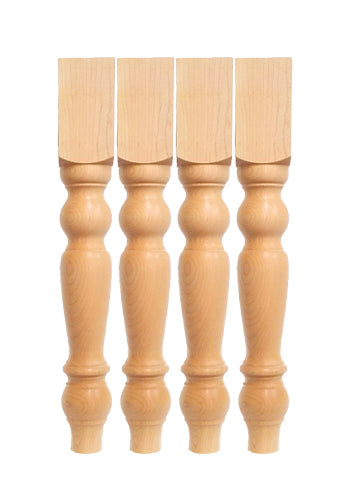Essential Factors To Consider for Selecting the Right Dining Table Legs Wood
Picking the suitable timber for dining table legs entails a nuanced understanding of various variables that influence both functionality and visual charm. The selection of wood type, varying from durable hardwoods to extra delicate softwoods, plays an essential role in making sure durability and stability. In addition, considerations concerning spending plan, layout, and maintenance have to be meticulously examined. Each of these components can drastically affect the general experience of your eating room. Understanding how these aspects relate is important for making an educated decision that meets your particular requirements and choices - Dining Table Legs Wood. What factors to consider will you focus on in your selection process?
Relevance of Wood Type

Hardwoods, such as maple, walnut, and oak, are usually favored for their toughness and resistance to wear. These kinds of timber give a durable structure that can hold up against daily use, making them optimal for eating tables that experience constant celebrations. On the other hand, softer timbers like yearn may be much more at risk to damages and scrapes, which might not be ideal for high-traffic locations.
In addition, the selection of timber can likewise impact the convenience of upkeep. Some woods require regular oiling or securing to protect their appearance, while others might be a lot more forgiving. Ultimately, choosing the proper wood type entails balancing aesthetic factors to consider with functional demands, guaranteeing that the dining table legs not just look attractive but additionally stand the test of time.
Evaluating Stability and Toughness
When assessing dining table legs, one have to think about the security and stamina they provide to the total structure. The legs are crucial in sustaining the tabletop and making sure the dining experience is safe and delightful. A steady table is essential for protecting against tipping or tottering, which can result in spills or accidents during dishes.
The choice of timber kind substantially impacts stamina. Woods such as walnut, maple, and oak are generally more resilient and durable than softwoods like pine or fir. Furthermore, the density and design of the legs play a crucial duty; thicker legs or those with a conical design can use much better assistance and stability.

Visual Factors To Consider
While functionality is vital, the visual appeal of eating table legs can not be forgotten, as they considerably affect the overall style and setting of the dining space. The option of timber, layout, and finish can take away or improve from the table's aesthetic influence.

Finishes additionally play a vital duty in looks. An all-natural finish can highlight the wood's inherent charm, while repainted or tarnished legs can introduce color see and individuality right into the space. In addition, the proportion and scale of the legs family member to the table top and bordering furniture should be taken into consideration to ensure visual equilibrium and communication.
Eventually, the table legs need to not only serve a functional purpose however likewise add to a natural and welcoming ambience, making them a vital consideration in the overall design of the dining area.
Maintenance Requirements
To ensure longevity and preserve the charm of wooden dining table legs, regular maintenance is necessary (Dining Table Legs Wood). Timber is an all-natural product that can be prone to damage from wetness, warm, and use. Establishing a routine care strategy will dramatically improve the sturdiness of your dining table legs.
Begin with regular dusting using a soft, lint-free towel to get rid of dirt and debris that can damage the surface area. For more detailed cleaning, use a light soap option and damp cloth, avoiding excess dampness that might seep into the wood. It is suggested to use a top notch wood gloss or conditioner every couple of months to nourish the timber and keep its gloss.
In addition, think about the environment where the table is positioned. Avoid straight sunshine, as it can cause fading, and use rollercoasters or placemats to shield the surface from warmth and wetness. Address any type of scratches or damages promptly with proper wood filler or touch-up pens to avoid further deterioration. By adhering to these upkeep requirements, you will certainly not only protect the visual charm of your wood table legs yet also prolong their functional life expectancy.
Budget and Cost Elements
Budget and expense factors regularly play an important function in the decision-making procedure for picking wood table legs. When evaluating options, it is vital to establish a clear budget plan that lines up with your general furnishings financial investment. The price of wood eating table legs can differ substantially based upon the sort of layout, timber, and craftsmanship intricacy.
Hardwoods such as cherry, walnut, and oak commonly command higher prices as a result of their visit our website longevity and visual appeal. In contrast, softer timbers like ache might be much more budget-friendly however might not supply the very same long life. Furthermore, customized or artisan-crafted legs can sustain additional costs, reflecting the ability and time purchased their production.
It is additionally crucial to think about the potential long-lasting value of your financial investment. While selecting lower-cost materials may seem financially sensible at first, they might need more regular replacement or repair services, eventually enhancing total expenditure.
Consequently, balancing top quality and expense is essential. Focus on materials that satisfy your aesthetic preferences while guaranteeing they fit conveniently within your spending plan, allowing you to produce an eating area that is both visually enticing and functional.
Final Thought
To conclude, choosing the proper timber for dining table legs necessitates mindful factor to consider of different variables, including timber type, stability, appearances, upkeep, and budget. Woods such as oak and walnut supply exceptional resilience and toughness, while layout and density contribute to total stability. Aesthetic charm and upkeep demands need to align with private choices and way of living. Eventually, a well-informed decision will certainly improve the long life and visual appeal of the table, ensuring satisfaction and performance for years to find.
Picking the ideal type of wood for dining table legs is vital for both visual appeal and architectural honesty. Ultimately, selecting the ideal timber kind involves balancing aesthetic factors to consider with useful demands, making sure that the dining table legs not just look appealing however likewise stand the examination of time.
It is suggested to use a top quality timber gloss or conditioner every couple of months to nurture the timber and keep its appeal.
The cost of wood eating table legs can differ dramatically based on the kind of workmanship, layout, and timber complexity.
In conclusion, selecting the proper timber for eating table legs necessitates mindful consideration of different elements, including wood type, stability, aesthetic appeals, upkeep, and budget.
Comments on “Explore Artisan-Made Dining Table Legs Wood for a Custom-made End up”